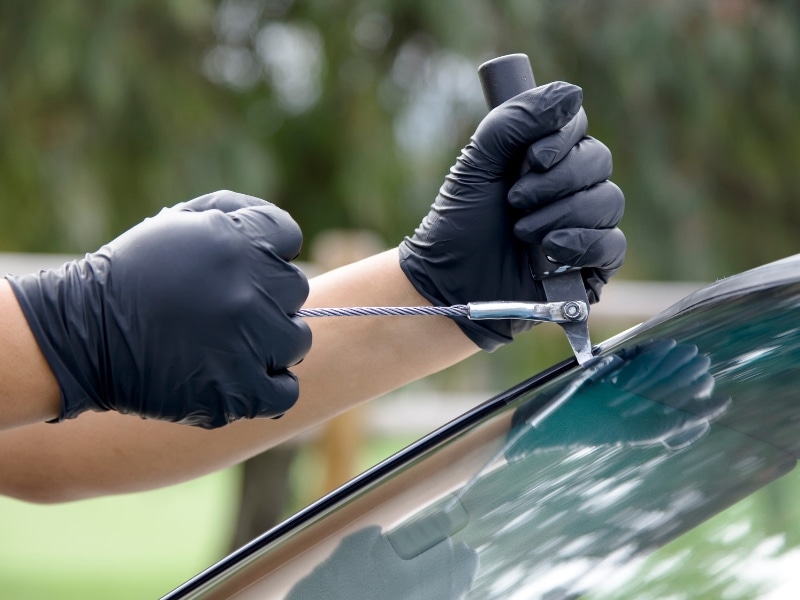Windscreen damage never comes at a good time. One minute you’re driving peacefully, the next you’re staring at a spreading crack right in your eyeline. What you do following matters — especially when you’re far from a workshop or tight on time. That’s where mobile windscreen crack repair proves its value, offering a quicker, road-friendly option when conditions allow. In Australia, where road types and temperatures vary dramatically, your windscreen is constantly under pressure. From tiny chips to complex star patterns, some cracks are straightforward to fix — others demand complete replacement. Knowing the difference can save you hassle, money, and safety risks. This article explains which types of cracks can be repaired on the spot, what affects that decision, and how to make the right call with confidence.
What are the common causes of windscreen cracks in Australia?
Every day, driving conditions take a toll on your windscreen. From unpredictable roads to harsh climates, damage can happen fast and without warning.
- Gravel strikes: Loose stones kicked up by passing cars or trucks create sudden chips.
- Heat stress: Rapid temperature changes weaken the glass and trigger cracking.
- Vehicle tension: Uneven body stress or ageing seals can warp the screen over time.
- Storm debris: Hail or flying branches from extreme weather often leave sharp impacts.
- Previous repairs: Poor or unfinished work can re-fracture under minor pressure.
Even short drives across regional areas increase your exposure to impact zones. And once a crack starts, your reaction matters. If you’re caught on the road, you have to know how to handle a cracked windscreen while driving to minimise risk and maintain control until help arrives. In short, Aussie roads aren’t gentle, so understanding crack causes helps you stay one step ahead.
Why is fast mobile windscreen crack repair necessary for safety?
Ignoring small cracks may seem harmless, but they can compromise your safety in profound ways. A damaged windscreen affects more than just visibility.
- Vision clarity: Even minor distortions can block hazards from view or confuse depth perception,
- Structural weakness: Cracks reduce the windscreen’s ability to support roof integrity during accidents.
- Airbag performance: Some airbag systems rely on a solid windscreen for proper deployment.
- Legal requirements: Driving with damaged glass may breach road safety regulations.
- Weather exposure: Moisture entering cracks worsens delamination and internal damage.
Left unchecked, minor issues become significant risks. If you’re wondering why a tiny chip suddenly became a 20 cm crack, understand why windscreen chips spread over time and how rapid pressure changes accelerate damage. Cracked windscreens aren’t just unsightly — they’re a hazard you can’t afford to ignore.
How is mobile windscreen crack repair different from workshop repair?
Mobile repair offers the same core benefits as a workshop — but comes to you, which can be a game-changer if you’re stuck at work or out bush.
- Fast response: Mobile techs can often arrive within hours, depending on location.
- UV-curing tools: Advanced portable equipment makes curing resins quick and reliable,
- On-the-spot assessment: Repair limits are judged immediately based on safety standards.
- Time efficiency: Most repairs are completed in under an hour with minimal disruption.
- No travel needed: You avoid the time and cost of workshop visits.
A key upside of mobile repair is the convenience without compromising on results. Technicians still use high-grade materials and techniques — they’ve just made them portable. That flexibility alone is worth its weight in gold when you’re time-poor or off the beaten track.
Can mobile windscreen crack repair handle all types of damage?
Not all cracks can be fixed with mobile repair — some are too large, too deep, or too poorly positioned. But many common types are good candidates.
- Bullseye cracks: Typically repairable if smaller than a 10-cent coin,
- Star breaks: Fixable unless they have deep fractures or edge involvement.
- Combo cracks: Depends on depth and location — may need workshop assessment.
- Edge cracks: Risky and often unrecoverable due to structural stress points,
- Long cracks: Anything over 15 cm is typically not suitable for mobile repair.
| Crack Type | Mobile Repairable? | Repair Notes |
| Bullseye | Yes | Small, central ones are ideal for mobile work |
| Star Break | Often | Avoid spreading toward the edge or being too large |
| Combination Crack | Sometimes | Complex types may need closer inspection |
| Edge Crack | Rarely | Usually not repairable on-site due to risk |
| Long Crack | No | Complete replacement is required for long-damaged lines |
A big drawback of edge cracks is how fast they spread, even before a technician arrives. Mobile repair works well for the right crack, but knowing when to call it is just as crucial.
Is mobile windscreen crack repair suitable for all vehicle types?
You don’t need a standard sedan to benefit from mobile repairs. Still, there are a few exceptions and special considerations to be aware of.
- Passenger vehicles: Most common cars, SUVs, and utes qualify for mobile fixes.
- Luxury cars: Some models may require post-repair recalibration for sensors.
- Larger vehicles: Buses and trucks often need workshop attention due to the windscreen size.
- Motorhomes: Non-standard designs can limit mobile tool compatibility,
- Vintage cars: May lack suitable glass or edge support for mobile sealing.
Generally, mobile repair services cover most Australian cars with ease. If you’re unsure about the state-approved practices for repairing your vehicle, review them and ensure your chosen technician follows the correct protocol. Mobile services suit the majority but not all of today’s diverse vehicle fleet.
When should you opt for windscreen repair over replacement?
Replacement isn’t always the best first move. Mobile repair can restore both the structural integrity and appearance of your device. Still, it must be done before the damage reaches critical points.
- Opt for repair: When cracks are short, stable, and away from the edge,
- Choose replacement: If cracks obscure the driver’s vision or reach multiple zones,
- Repair first: If the damage is surface-level and hasn’t broken inner layers,
- Replace when: The damage affects sensors, defrosting elements, or rain-detecting tech.
- Go mobile: If you qualify and opt for affordable mobile windscreen crack repair options, and the crack is safe to fix.
A key benefit of early repair is avoiding calibration costs, extra downtime, and insurance complexity. The faster you move, the better your odds of a simple fix.
Does mobile windscreen repair meet Australian safety standards?
Repair safety isn’t negotiable — especially when it comes to windscreens. That’s why Australia sets strict rules on what qualifies as a compliant repair job.
- Standards enforced: All mobile work must meet AS/NZS 2366.1 windscreen repair codes.
- Visual clarity: Repaired areas must be distortion-free and durable.
- Material testing: Only certified resins and tools are allowed for use.
- Documentation: Some states require proof of compliant repair for registration.
- Technician training: Operators must understand safety zones and driver visibility guidelines to ensure safe operations.
One clear advantage of professional mobile repair is the assurance it’s road-legal — something DIY kits just can’t match. You can keep moving without risking demerits or fines.
Final thoughts
Not all windscreen cracks need a complete replacement, but ignoring them isn’t an option either. Knowing which cracks are mobile-repair-friendly saves time, money, and hassle. Whether you’re navigating a gravel track or squeezing through peak-hour Sydney traffic, quick action protects both your safety and your hip pocket. And when you’re ready to decide, you don’t need to go it alone —talk to the team at GRS Windscreen PRO for convenient repair options that align with your car, crack, and schedule.


